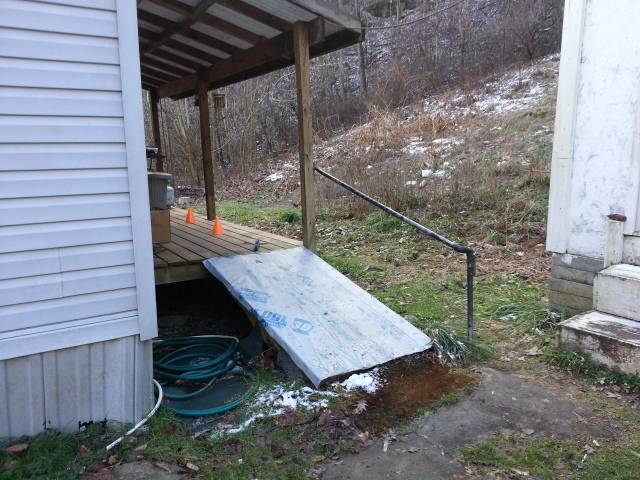We’ve all heard the saying, “Size doesn’t matter,” but in reality it does. Now get your mind out of the gutter; we definitely weren’t talking about that! Here in the ramp world we know size is critical to building the best ramp possible.
As we travel through Virginia, North Carolina, West Virginia, Ohio, Kentucky, Tennessee and Maryland evaluating homes for aluminum handicap ramps, a myth seems to follow us. When it comes to wheelchair ramps, the myth is that all you need is a 4 by 8 sheet of plywood at the door and you’re good to go, but there’s a lot more to it than that. Obviously, you need to build a ramp that is long enough to get from point A to point B and wide enough to comfortably fit a wheelchair, but that’s just the beginning. Wheelchair Ramps can twist and turn, changing direction at a variety of angles. A big reason this is done is to help make sure a wheelchair ramp isn’t too steep. If you simply place a piece of plywood straight down at your door, you may be making a wheelchair ramp that is better suited for your kids and grandkids to use as a skate board ramp instead of something to give you the freedom to move in and out of your house.
The Americans with Disabilities Act (ADA) says that a wheelchair ramp should be at a minimum of a 1 in 12 pitch. This means that in order to make sure a wheelchair ramp is not too steep for any situation it should be a foot long for every inch high, measured from the landing point of the ramp. So, for example, if you have 3 steps into your house that measure 21 inches and you want your wheelchair ramp to end 9 inches below the height of your steps, you would need a 30 foot long ramp.
If a wheelchair ramp is too steep, it becomes nearly impossible for someone with mobility issues to navigate. A caregiver may not have the strength to safely get someone up or down the ramp. No matter how strong you may be – or you may think you are – a poorly constructed ramp can humble you quickly when you get your loved one stuck (Imagine telling Aunt Bertha she’s too heavy for you to push up the ramp…). Not to worry, though, it’s a poor ramp to blame and not your abilities. You certainly can’t use your arms to push someone in a manual wheelchair up a ramp that is too steep. Even walking up a steep ramp can be difficult, not to mention dangerous. But wait, you say, “I have a scooter and I know it can manage a slope greater than 1/12.” You are correct – scooters are safe on wheelchair ramps as steep as 1/8 and a shorter ramp may be all you need at this time. But what if your situation changes and you no longer can use a scooter? This is where modular ramps have a huge advantage over wood ramps. A wood ramp cannot be reconfigured or lengthened easily. In fact, with most wooden ramps it would be easier to just tear them down and start over. A modular aluminum ramp like one of our EZ Access ramps can be reconfigured or lengthened in a few hours.
The goal of a ramp is to help people move in and out of their homes more freely, but a ramp that is too steep or not the right size can do more harm than good. When you decide to install a mobility ramp at your house, remember to keep those three fateful words in mind – size does matter.
If you are concerned about designing a mobility ramp to meet your needs, we’ll be happy to send a Mobility Specialist to your home and perform a free Home Accessibility Inspection. This inspection, done by one of our professionals, will detail what things you might consider to give you more freedom to move around your home and will include a detailed wheelchair ramp design plan.



